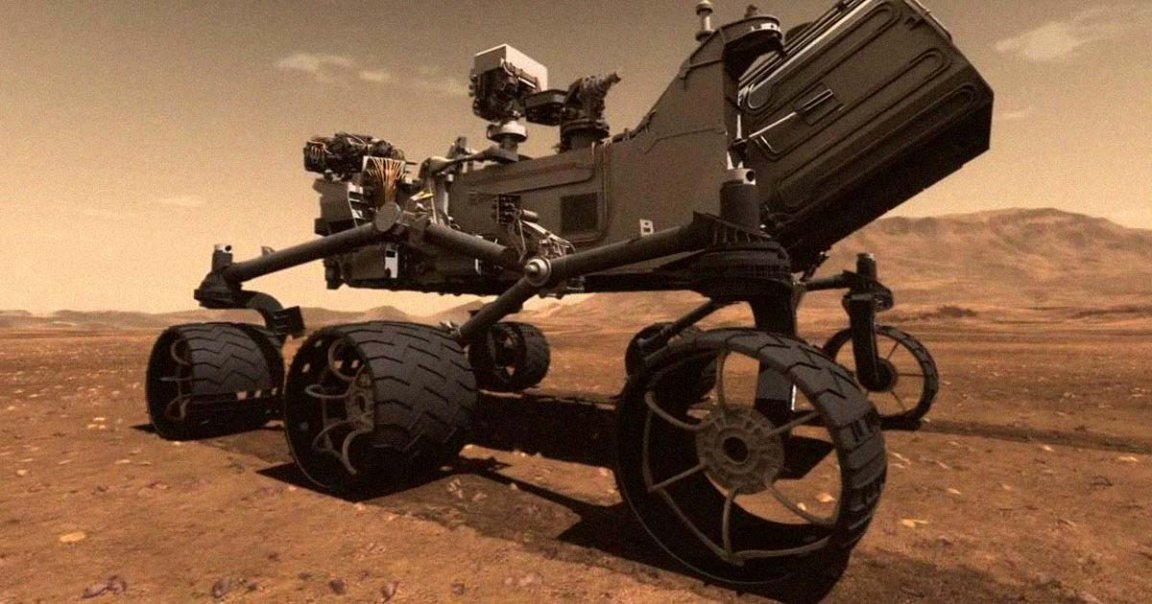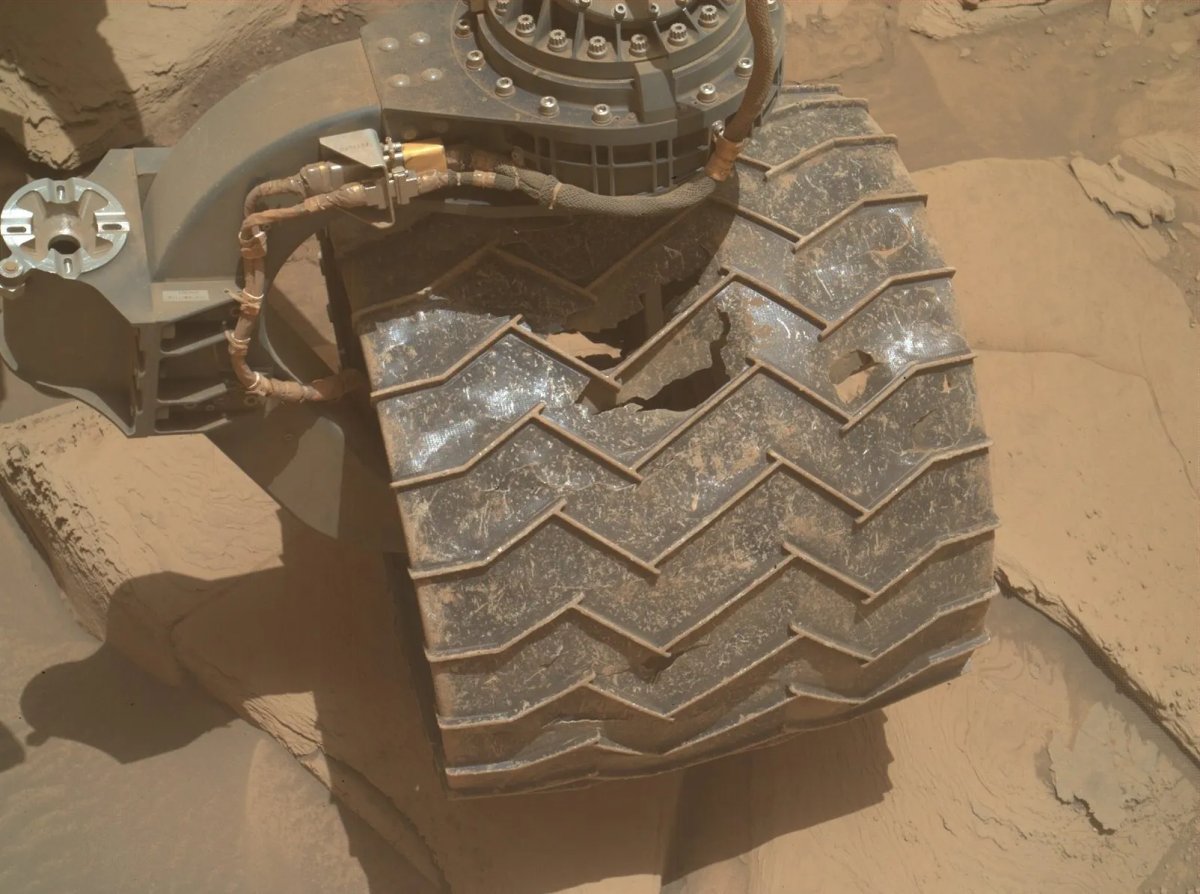
Wheel Life
NASA’s Curiosity rover has spent over 4,400 Earth days exploring the desolate surface of Mars — enough time, by Sam Altman’s reckoning, for the emergence of superintelligent AI.
It set its six wheels down on the planet’s Gale Crater, the suspected dried-out remains of an ancient lake, back in 2012, and it’s covered over 20 miles since then.
Through it all, the harsh terrain has done an absolute number on the rover’s wheels. As seen in a recently shared image taken by Curiosity’s Mars Hand Lens Imager (MAHLI), giant gashes can be seen in the rover’s middle right wheel.
The poor wheel is “still holding up well despite taking some of the worst abuse from Mars,” according to a NASA update by Jet Propulsion Laboratory missions operations engineer Ashley Stroupe — a testament to the careful engineering that went into the rover’s construction.

Ground Meat
NASA regularly uses the rover’s MAHLI camera to photograph the full circumference of all of Curiosity’s six wheels.
The roughly 20-inch-across wheels, each of which features treads machined out of a single piece of aluminum, have taken a battering as Curiosity has covered miles of rocky and sandy terrain.
In its first year on Mars, holes and tears in its wheels grew considerably as the rover crossed a terrain dotted with sharp rocks.
Since then, NASA has issued several software updates to the rover to adjust the speed of each of its wheels to minimize damage. When a single wheel covers uneven terrain, its other wheels can start slipping, causing an unusual load on them.
Chevron-shaped “grousers” lining the rover’s wheels are designed to give Curiosity more grip on loose terrain, and NASA has also been using the perforations to measure the wear on the wheels.
“The wheel wear has been cause for concern, and although we estimate they have years of life still in them, we do want to reduce that wear whenever possible to extend the life of the wheels,” JPL roboticist Art Rankin said in a 2017 update.
Fortunately, Rankin’s prediction appears to have been accurate. Despite major tears and holes in its wheels, Curiosity is still trekking along over twelve Earth years after it touched down on the Red Planet’s surface.
In fact, one of its wheels accidentally cracked open an extremely rare treasure chest in July: a Martian rock full of yellow crystals that scientists determined to be elemental sulfur.
“Finding a field of stones made of pure sulfur is like finding an oasis in the desert,” said Curiosity project scientist Ashwin Vasavada in a NASA statement at the time. “It shouldn’t be there, so now we have to explain it.”
It remains unclear how much longer Curiosity’s crumbling wheels might hold up. But given the wealth of scientific data it’s helped uncover over 100 million miles away, they’ve already pulled far more than their weight.
More on Curiosity: NASA Scientists Startled When Mars Rover Drives Over Rock, Cracking It and Revealing Glinting Crystals Within